ETL is the process that involves extracting data from multiple sources, transforming it into a standard format, and loading it into the destination database. ETL tools streamline this process of moving data from scattered sources to a centralized, standardized format through automation.
ETL tools boost efficiency and data quality by automating the process and ensuring data consistency by transforming it into a standard format. These programs free up the employees and allow them to use the homogenized data for analysis and other tasks.
Geekflare curated the list of the top ETL tools based on pricing, cloud integration support, and data transformation capabilities.
- Supermetrics – Best for Marketing Data Aggregation
- Dataddo – Best for Cloud Data Integration
- Hevo – Best for Real-Time Data Pipeline
- AWS Glue – Best for Serverless Data Preparation
- Integrate.io – Best for Data Processing Workflows
- Fivetran – Best for Automated Data Integration
- Informatica – Best for Enterprise Data Integration
- Matillion – Best for Cloud Data Warehouses
- Apache NiFi – Best Open Source for Cybersecurity
- Pentaho Data Integration – Best for Java Developers
- IBM DataStage – Best for High-Volume Data Transformation
- Alteryx – Best for Analytics Process Automation
- Qlik Compose – Best for Data Replication and Ingestion
- Show less
You can trust Geekflare
Imagine the satisfaction of finding just what you needed. We understand that feeling, too, so we go to great lengths to evaluate freemium, subscribe to the premium plan if required, have a cup of coffee, and test the products to provide unbiased reviews! While we may earn affiliate commissions, our primary focus remains steadfast: delivering unbiased editorial insights, and in-depth reviews. See how we test.
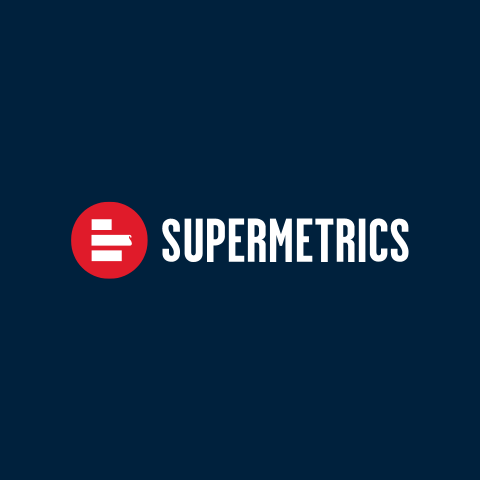
Supermetrics
Best for Marketing Data Aggregation
- Data Sources & Connectors135+
- Support and DocumentationExtensive Tutorials, Active Support
About Supermetrics
Supermetrics helps agencies, small businesses, and large companies solve their data problems with its web-based ETL capability. It acquires the marketing data companies need and loads all the data to the destination platform, whether it’s a data warehouse, data lake, data visualization tool, spreadsheet, reporting, storage, or BI tool.
Supermetrics organizes marketing data effectively so the users can quickly bring dimensions and metrics from the marketing platforms into the go-to reporting with no sampling. After migrating data to the preferred storage platform, users can filter data accordingly. Users can also check the performance to know what is working and what is not. In the end, they can prepare their dashboard by automating the reporting and scheduling data transfers while eliminating hours of manual work.
Supermetrics supports Google Sheets, Power BI, Microsoft Excel, Amazon S3, Azure SQL Database, and Snowflake as data destinations. Users can connect this platform to data sources like Ahrefs, Google Analytics 4, Google My Business, Shopify, YouTube, Bing Webmaster Tools, Instagram Insights, and more.
Supermetrics enables companies to build stunning dashboards. The only task for the businesses is to work on crunching numbers in the spreadsheet or move their data into the data warehouse. Companies can extract marketing data in JSON, CSV, or any other custom output format.
Supermetrics Pros/Cons
99.9% platform uptime
14-day free trial
Collect granular marketing and sales data
Create custom rules to remove data inconsistencies
Templates and charts to create insightful reports on the data journey
Complicated pricing model
Data warehousing is only available to Enterprise plan users
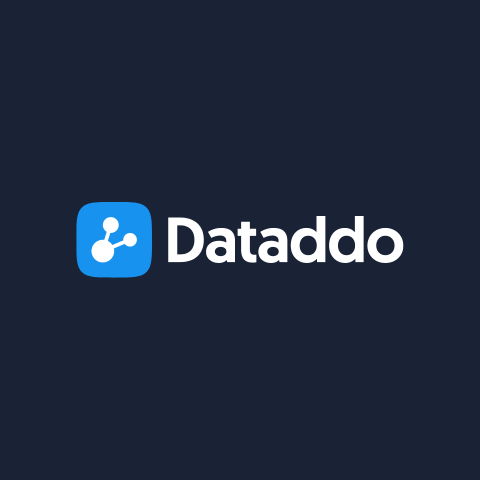
Dataddo
Best for Cloud Data Integration
- Data Sources & Connectors300+
- Support and DocumentationOnline guides, Email, Chat support
About Dataddo
Dataddo is a data integration platform that connects all data sources to move data to different storage and dashboards instantly. It helps collect marketing data from any source and reach any destination. It also allows users to monitor all the incoming data from the management center.
Dataddo manages all the changes to the ETL pipelines so that organizations do not need to worry about missing data due to broken pipelines. Its sophisticated data manipulation features make non-technical users use it like a pro. In addition, it operates with the BI tools and data warehouse so that users can bring their own data.
Dataddo is an excellent tool that supports a wide range of cloud storage, such as AWS Redshift or Google Big Query, and on-premise data warehouses like PostgreSQL, SQL server, and Maria DB. It also supports a wide range of file servers, including Google Sheets and Amazon S3.
Dataddo Pros/Cons
14-day free trial
Free plan available for weekly data sync
Managed data pipelines without any coding
Certified and fully secure platform
Unified Dataddo API for all integrations
All plans need yearly commitment
The free plan offers weekly data sync frequency
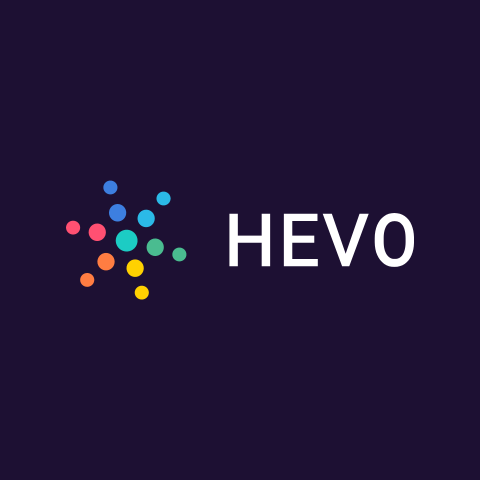
Hevo
Best for Real-Time Data Pipeline
- Data Sources & Connectors150+
- Support and DocumentationComprehensive docs, 24/7 support
About Hevo
Hevo is a highly intuitive and no-code data pipeline software that sets up reliable marketing data pipelines within minutes. It loads data faster from any source to the warehouse in real-time for better analytics.
Hevo supports 150+ plug-and-play integrations across SaaS applications, SDKs, streaming services, cloud storage, and databases. It migrates data to 15+ destinations, including SaaS apps, databases, data warehouses, and more.
Hevo’s fully automated and managed data pipeline loads all the data to the data warehouse and prepares it for further analysis. Hevo’s intuitive interface facilitates pipeline setup with a few clicks, saving time while developing a core product.
Hevo can manage all pipelines and future operations. It eliminates the need for ETL scripts or Cron jobs for marketing data. Hevo efficiently detects faults and formats or transforms data. It can handle millions of records without latency, ensuring the growth of pipelines with the growth of business.
Hevo Pros/Cons
Free forever plan for up to 1M events/month
14-day free trial with the complete feature set
Zero-maintenance automatic data sync
GDPR, HIPAA, and SOC 2 compliant
Events usage above the plan’s quota is charged extra
Does not offer phone support
Free plan available for only five users
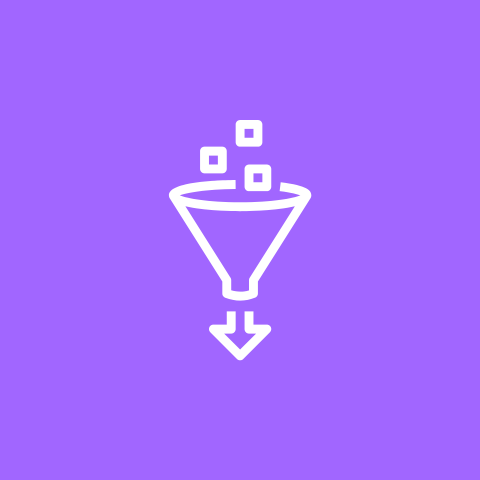
AWS Glue
Best for Serverless Data Preparation
- Data Sources & Connectors70+
- Support and DocumentationDetailed documentation, AWS support
About AWS Glue
AWS Glue offers a serverless but scalable data integration service. It makes discovering, combining, and preparing data easier for machine learning, application development, and analytics. It only takes minutes to analyze data and prepare it for use. It performs multiple tasks, including extracting and discovering data from different sources, cleaning, combining, normalizing, and enriching data.
AWS Glue comes with code-based and visual interfaces to make data integration effortless. AWS Glue Data Catalog is also there to help companies find and access data easily. Developers and data engineers can visually create, monitor, and run ETL workflows on this platform in just a few clicks.
Companies can visually enrich, normalize, and clean data without writing any code. They can use SQL to replicate and combine data across various data stores. With AWS Glue, users get faster data integration and automate data integration workflow to scale the business.
AWS Glue Pros/Cons
Free for 1 Million objects stored in the AWS Glue Data Catalog
Amazon Q data integration to build data integration pipelines using natural language
Automatic scaling of resources based on workload
Development endpoints to test ETL code
Create complex ETL pipelines with simple job scheduling
Complicated pricing model
Needs user expertise to operate serverless architecture
Does not offer extensive integration support for platforms other than Amazon

Integrate.io
Best for Data Processing Workflows
- Data Sources & Connectors150+
- Support and DocumentationExtensive knowledge base, Chat support
About Integrate.io
Integrate.io turns data house into a data platform, fueling all operational systems and company decision-making. It helps provide a better customer experience, more profit, and faster growth. Here, both technical and non-technical users can build and manage data pipelines. The top use cases of this software are operational ETL, including bidirectional Salesforce data integration solutions, B2B file data sharing, and file data preparation.
Integrate.io offers a low-code data transformation layer where non-technical users can choose from 220+ table and field-level transformations, while technical users can opt for more advanced transformations.
Integrate.io empowers eCommerce companies that need real-time reporting to grow and operate their business. They can integrate supply power to many industries to grow with their own data. Users can enhance customer experience with real-time inventory, carrier, and fulfillment performance reporting to uncover operational efficiencies and build reliable forecasts.
Integrate.io Pros/Cons
7-day free trial
Low-code data pipelines with drag-and-drop facility
Automate manual data processes
24/7 customer support and free onboarding
The starter plan does not support unlimited connectors, packages, or users
Per-credit cost is high for the Starter plan
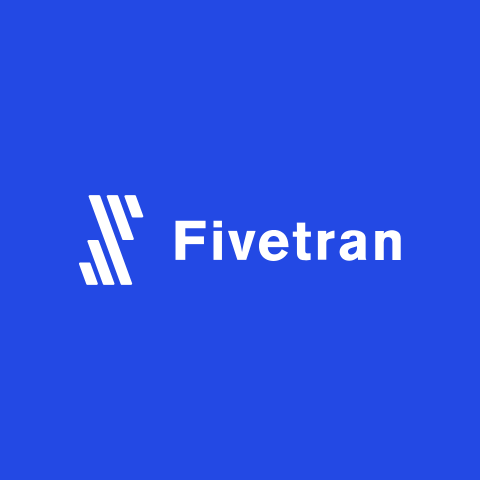
Fivetran
Best for Automated Data Integration
- Data Sources & Connectors500+
- Support and DocumentationExtensive resources, Email support
About Fivetran
Fivetran securely connects applications and databases to centralize data and deliver faster and better insights to users. Select the destination to bring data from the data warehouse or other sources and build a data-driven business. Companies can accelerate the analytics with integrated transformations.
Fivetran’s pipelines continuously and automatically update with fully managed connectors. This easy-to-use platform maintains API changes and provides rich data insights in minutes. Fivetran guarantees an uptime of 99.9% as it performs all the pipeline works. It seamlessly prepares, cleans, and lands data in the right destination.
Fivetran offers comprehensive security and faster insights with pre-built transformations, governance, and privacy. It centralizes connector management and automates data transformation with zero consumption.
Fivetran Pros/Cons
Free forever plan for up to 500,000 monthly active rows
500+ fully managed connectors
HITRUST and PCI DSS Level 1 Certification
24/7 global email support
Pricing gets costly with increasing data volume
Does not offer built-in data quality checks
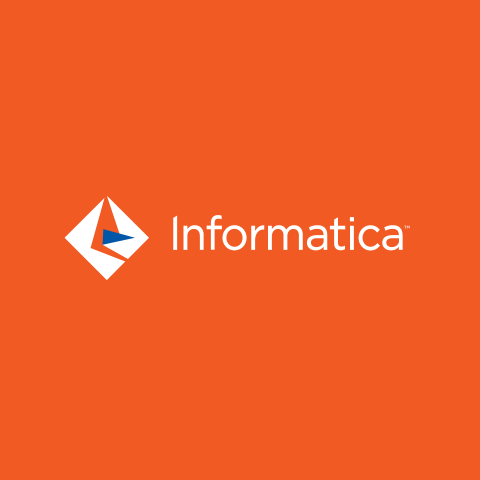
Informatica
Best for Enterprise Data Integration
- Data Sources & Connectors100+
- Support and DocumentationPhone, email support, Training programs
About Informatica
Informatica enables organizations to build an intelligent data enterprise and manage all data in a single platform. It transforms basic data into business intelligence via its Intelligent Data Management Cloud, a cloud dedicated to data management tasks. The ETL tool helps to integrate, access, and ingest all the data to accelerate analytics along with AI projects and drive cloud modernization.
Informatica protects user data by using a marketplace where users can enhance the value of privacy regulations and meet daily changes. Informatica supports complex hierarchical documents like XML, JSON, and AVRO that companies can read and write without any coding. It offers pre-built transformation for industry-standard formats like SWIFT, HIPAA EDI X12, ACORD, and EDIFACT.
Users can gain a perfect view of all the data in a single window for better insights in order to improve experiences, online sales, and supply chains. Informatica delivers and synchronizes all the data to modernize applications rapidly and automate business processes.
Informatica Pros/Cons
Free plans for data loading and cloud data integration
Embeddable high-performance engine to execute transformation
Process real-time and batch data with a common data transformation service
CLAIRE-powered recommendations for source datasets and best transformation
Intelligent Operational Insights at every stage of the pipeline
Does not offer transparent pricing
Free Data Loader plan does not offer Live Chat support

Matillion
Best for Cloud Data Warehouses
- Data Sources & Connectors126
- Support and DocumentationOnline documentation, support portal, knowledge base
About Matillion
Matillion Data Loader lets organizations manage CDC and batch pipelines together without coding knowledge. This cloud-native platform makes modern analytics easy by transforming data into useful information in minutes for better business decisions and new insights.
Matillion extracts the data, transforms it, and loads it in the cloud data warehouse. This ETL tool offers the power and flexibility of the cloud to organizations for ready, rapid, and easy access to their data. Use Matillion’s extensive inventory of out-of-the-box and pre-built connectors for the most popular databases and applications.
Matillion supports almost all cloud data warehouses, such as Delta Lake, Snowflake, Microsoft Azure Synapse, Google BigQuery, Amazon Redshift, and more, to offer the power and benefits of all cloud services.
Matillion Pros/Cons
14-day free trial with 500 free credits
Remove duplicated efforts through GitHub integration and automatic versioning
Efficient parallel processing to handle simultaneous changes across multiple jobs
Complex data transformations with low-code or no-code
Prompt components for generative AI use cases
24/7 critical support is not available for Standard plan users
Limited API implementation
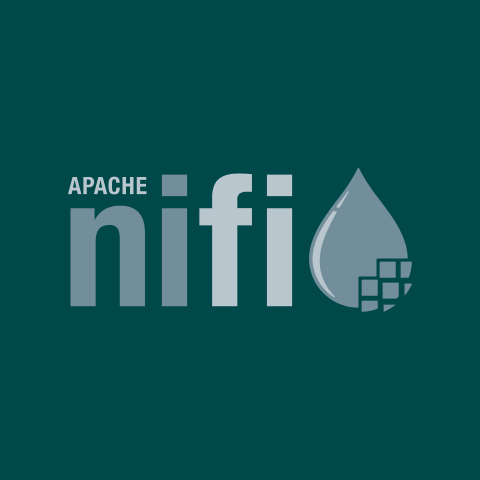
Apache NiFi
Best Open Source for Cybersecurity
- Data Sources & ConnectorsHDFS, Kafka
- Support and DocumentationCommunity forums, guides
About Apache NiFi
Apache NiFi is a scalable and distributed open-source data integration platform that facilitates automated data flow between diverse systems. Its capabilities extend beyond just handling ETL processes as it facilitates data extraction, transformation, loading, routing, filtering, and aggregation.
Apache NiFi is an excellent tool that effectively solves various data integration challenges. It finds application across diverse industries, including government agencies, financial institutions, and healthcare organizations.
Apache NiFi acts as a data management software facilitating secure, efficient, and cost-effective processing and management of massive data volumes for organizations. It guarantees data delivery, buffers data with back pressure, prioritizes queuing and applies flow-specific QoS.
Apache NiFi ensures reliable delivery of information by incorporating loss-tolerant mechanisms. Its dynamic prioritization feature enables users to rapidly develop and modify their setups with back pressure control, guaranteeing low latency and high throughput.
Apache NiFi Pros/Cons
Source code available on GitHub
User-friendly interface with flow templates, data records, and restoration
Supports adding additional features like controller services, reporting, and custom UI
Flexible scaling by clustering and adjusting concurrent tasks on the processor
Steep learning curve
Deployment and operation can be costly due to high hardware requirements

Pentaho Data Integration
Best for Java Developers
- Data Sources & ConnectorsOracle, MySQL, PostgreSQL
- Support and DocumentationDetailed guides, Community support
About Pentaho Data Integration
Pentaho Data Integration (PDI), commonly referred to as Kettle, is an open-source ETL tool offering versatile capabilities for data integration and transformation.
Pentaho Data Integration can extract information from databases, flat files, and web applications. Then, it transforms data into desired formats before securely loading it into destinations like cloud storage, databases, or files.
PDI offers flexibility to its users to quickly build up and run successful data integration jobs on a secure platform. This open-source solution is the perfect blend of affordability and flexibility, enabling reliable data handling for large volumes. Its user-friendly GUI makes it easy to create and manage jobs with various built-in functions that simplify ETL processing.
PDI also allows for the connection of versatile sources and destinations, while its automated scheduling provides troubleshooting solutions. Users benefit from the well-documented source code of PDI on the GitHub repository, plus get knowledge-sharing support from its community members.
Pentaho Data Integration Pros/Cons
Recurring process scheduling and management
Updated documentation available
Open-source software without any cost
Manage data on cloud and on-premise environments
The interface does not look modern
Limited options for data visualization
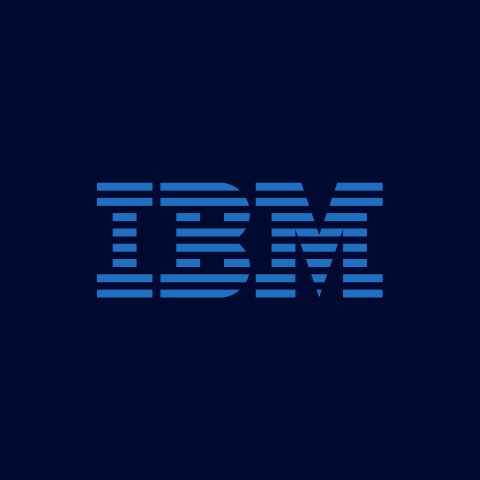
IBM DataStage
Best for High-Volume Data Transformation
- Data Sources & Connectors200+
- Support and DocumentationExtensive documentation, IBM support, Community
About IBM DataStage
IBM DataStage is a robust ETL software that enables organizations to create data pipelines in the cloud environment. The core functionality of this data integration application is to develop and implement data transformation tasks. This no-code or low-code environment comes with hundreds of pre-built connectors for reduced development time and better deployment consistency.
IBM DataStage smoothly integrates with other IBM services for data virtualization, governance, BI, and data science for accelerated DataOps. DataStage flows allow collaborative tasks and offer access control to the projects.
IBM DataStage can automatically balance the workload while processing a large volume of data with parallel engine and load balancing. These ensure enhanced management of computer resources and high performance. Its data lineage feature shows the flow of data through the transformation process.
IBM DataStage Pros/Cons
Execute ELT data pipelines in cloud and on-premise platforms
Use governance capabilities to deliver trusted data
Modern data integration for extended capabilities
Deploy the same workflow in all data sources to reduce data movement costs
Complex pricing structure
Steep learning curve

Alteryx
Best for Analytics Process Automation
- Data Sources & Connectors90+
- Support and DocumentationRresources, Community support, Knowledge base
About Alteryx
Alteryx allows companies to automate the ETL process with a self-service solution. Data analysts can access hundreds of data connectors to build pipelines and load the data into targets such as cloud data warehouses. It also supports transforming data into the preferred format for analytics. Data analysts, data engineers, data scientists, and business users can benefit from this AI/ML-powered platform.
Alteryx facilitates quick data preparation for building scalable end-to-end data pipelines. Post transformation, it automatically sends the output to the target applications that can utilize it. One of its prominent use cases is analytics automation. Alteryx cleanses and blends the data to deliver unified data profiles that can be used for advanced analytics tasks.
Alteryx supports the Software Development Lifecycle while its role-based access control ensures data security. It even allows programmatic access via APIs and workflow automation that saves the team from manual tasks. Additional features of this platform include data pipeline orchestration, active data profiling, and universal data connectivity.
Alteryx Pricing
The pricing of Designer Cloud starts at $4,950 for US customers. For other countries, contact the sales team.
Alteryx Pros/Cons
30-day free trial available
Visual, intuitive interface for users with any experience level
Alteryx Marketplace to shop for add-ons for enterprise-level needs
Pricing information is not available for customers outside the US
Separate platform fee applicable for new customers

Qlik Compose
Best for Data Replication and Ingestion
- Data Sources & Connectors100+
- Support and DocumentationCustomer support, Documentation, Training, Community
About Qlik Compose
Qlik Compose is data automation and transformation software purpose-built for data architects. It streamlines repetitive tasks related to ETL integration to free users from manual coding. Qlik Compose automates tasks in the data warehousing lifecycle, such as designing, development, change management, and impact analysis.
Qlik Compose automatically generates the ETL commands, data warehouse structures, and documentation for the users. Thus, they can design, build, and maintain a data warehouse in less time and money.
Qlik Compose enables real-time data warehousing on Amazon Redshift. It supports integration with Qlik Replicate to load incremental source updates in real-time in the Cloud. This integration enables real-time ETL and supports the widest ecosystem data sources, including relational databases, legacy, and NoSQL data stores.
Qlik Compose Pros/Cons
30-day free trial to test the platform
Secure cloud platform that offers AI-powered insights
Automatically generate end-to-end workflows for data ingestion
Real-time source feed loading with Change Data Capture
Configure pre-loading rules to automatically discover issues
Transparent pricing information is not available
Limited ETL features compared to competitors
Steep learning curve
ETL Software Comparison
The table below compares pricing, ratings, and features for the best ETL tools.
Best ETL Tools | Rating Geekflare’s editorial team determines ratings based on factors such as key features, ease of use, pricing, and customer support to help you choose the right business software. | Pricing (monthly) | Data Transformation Capabilities | Explore |
|---|---|---|---|---|
 Supermetrics | $29 | Automated data normalization, data blending | ||
 Dataddo | FREE | Data flattening, Data harmonization, Data union, Data blending | ||
 Hevo | FREE Forever | Powerful data models and workflows | ||
 AWS Glue | FREE | Visual ETL with drag-and-drop interface, streaming data transformation | ||
 Integrate.io | $2.99/credit | Table and field-level low-code data transformations | ||
 Fivetran | FREE Forever | Quickstart data models, custom data transformation | ||
 Informatica | Custom Pricing | Built-in document processor for unstructured data transformation | ||
 Matillion | $1000 | Pre-built transformations for staging, models, REST connector, orchestration, and data governance | ||
 Apache NiFi | FREE | Complex data transformation | ||
 Pentaho Data Integration | FREE | Filtering, sorting, deduplication, converting data | ||
 IBM DataStage | $1.75/Capacity Unit-Hour | Transform bulk data through SQL Pushdown | ||
 Alteryx | Custom Pricing | Predictive transformation suggestions and data brushing | ||
 Qlik Compose | Custom Pricing | Scalable cloud data transformation |
What is ETL?
ETL stands for Extract, Transform, and Load. ETL is a data integration process that brings data from multiple sources and puts it in a single unified data store. It consists of three stages, which are outlined below.
- Data Extraction: First, the application EXTRACTS data from various sources and store it in a single centralized database.
- Data Transformation: The tool TRANSFORMS it by combining and deduplicating it while ensuring its quality.
- Data Loading: Lastly, the software LOADS the data into the target destination for implementation.
ETL vs. ELT
ETL and ELT are similar, but their working method is different. ETL transforms data before loading it, while ELT loads data first and transforms it later. Let’s find out the critical differences between these two.
| ETL | ELT |
|---|---|
| ETL stands for Extract, Transform, and Load. | ELT stands for Extract, Load, and Transform. |
| In ETL, data moves from the source to the destination. | ELT uses the data stores to perform the transformation. |
| ETL is best suited for smaller data sets that require tough transformations. | ELT is best suited for large amounts of unstructured and structured data. |
| ETL is good for more stable, efficient, and speedier data analysis. | ELT is not ideal for speedy analysis. |
| ETL offers more security during basic transformations. | ELT offers comparatively less security as it depends on data warehouses. |
How Does the ETL Tool Work?
ETL tools enable companies to perform extract, transform, and load processes. ETL solutions offer different feature sets, and their functionality depends on their use and environment. However, all aim to streamline and simplify the process. Here is how ETL tools work:
- EXTRACT the data from different sources according to the organization’s goal.
- TRANSFORM the same data from its original raw form to a clear format in order to gain meaningful information and business intelligence.
- LOAD the transformed data into a cloud or on-premise data warehouse where companies can use it for reporting and analytics in order to shape business strategies.
Why Do You Need ETL Tool?
Businesses need an ETL platform to streamline the messy process of working with data from multiple sources. It automates collecting, transforming, and loading data into a central location, saving time and effort. These applications enable advanced data cleansing and profiling of large and complex data with better efficiency and performance. Thus, data scientists can analyze and turn it into valuable business insights that drive better decisions and user experiences.
Benefits of ETL Tools
Improved Data Quality and Consistency
ETL tools work as data janitors, making sure the data used for analysis is clean and consistent. They can identify errors such as missing values, formatting inconsistencies, and duplicate entries before fixing. ETL services also allow users to define data transformation rules to convert all incoming data into a single format.
Enhanced Decision-Making
Making decisions based on data of varying formats scattered across different systems is a challenging task. ETL tools bring data together into a centralized location to allow users to skip this chaotic situation. Businesses can perform comprehensive analysis and reveal hidden patterns from this unified data view. Leaders can make data-driven strategies and improve business performance using clean and consistent data.
Increased Efficiency & Productivity
Manual data extraction and transformation from various sources is time-consuming and error-prone. ETL tools free up data analysts and scientists by automating these tasks. As a result, they can focus on tasks like data exploration, model building, and insight generation. These tools also automate repetitive tasks to minimize the risk of human error and ensure accurate and reliable results.
Streamlined Data Integration
Integrating data from different sources into a complex ecosystem of applications and databases is highly complicated. ETL tools make this process simple by providing a central platform. Features like pre-built connectors seamlessly extract data of any format or origin. This streamlined data integration empowers businesses to leverage the collective power of all their data to unlock valuable insights.
How to Choose the Best ETL Tools
Selecting the right ETL tool is crucial for efficient data management. For that, companies must identify their needs and scalability, check the system compatibility and processing power, and look for real-time processing and automation capabilities. The complete list of key factors to consider is as follows:
Identify Data Sources
Companies should start by mapping their data sources, including databases, cloud applications, spreadsheets, and CRMs. Understanding various formats and structures helps users choose a tool with compatible connectors.
Define Your Goals
Clearly defining the objectives of the ETL process for an organization will help them choose the right software. Whether they want to build a data warehouse or create MS models will determine the tool they need.
Understand Your Scale
Consider the volume and complexity of your data. If you’re dealing with large datasets, prioritize tools that can handle high-performance processing and efficient scaling as your data grows.
Data Source Connectivity
Before choosing an ETL tool, make sure its connectors support all your data sources. With native connectors, users get seamless integration and skip the need for custom coding.
System Compatibility
Only with a smooth integration can companies expect a streamlined data flow. So, make sure the ETL tool is compatible with your existing data warehouse and other components of your data ecosystem.
Processing Power
Evaluate the processing capabilities of an ETL tool against your data volume and transformation needs. Features like parallel processing and in-memory processing can provide faster performance.
Scalability
Choose a tool that can scale up or down according to your data volume and processing needs. Cloud-based ETL products usually offer more flexible scalability than on-premise solutions.
Transformation Capabilities
Transformation is a vital part of the ETL process. The ETL tool must be able to perform transformation tasks like data cleaning, filtering, aggregation, joining datasets, and handling complex data manipulations.
Data Quality Tools
Look for an ETL tool that ensures quality and accurate data through built-in data profiling, cleansing, and validation features. It will save from using separate data quality tools.
User-Friendly Interface
To make the most of an ETL tool, select one with a user-friendly interface. Applications with features like drag-and-drop functionality and visual data flow simplify the ETL process for non-technical users.
Automation and Scheduling
ETL software should have automation for repetitive ETL tasks like data extraction and loading to save time and ensure consistency. Its scheduling capabilities allow users to run data pipelines at specific intervals.
Real-time Processing
Organizations that need real-time data for tasks like fraud detection or stock market analysis should choose an ETL tool with real-time processing capabilities.
Data Security
Choosing an ETL tool with encryption, access controls, and activity auditing enables users to protect their sensitive data throughout the process.
Regulatory Compliance
Ensure the ETL tool supports compliance with relevant data privacy regulations, such as GDPR and HIPAA.
Pricing Model
Consider the business budget for this software and choose a pricing model that aligns with data volume, user base, and required features.
Customer Support
Reliable customer support is essential for troubleshooting issues and getting expert guidance. Evaluate the vendor’s support options and response times.
Types of ETL Tools
ETL tools include open-source, enterprise, cloud, and custom versions.
Final Words
ETL tools centralize all data so that users can build data pipelines and connect stakeholders and leaders with the information they need to work efficiently. This helps data teams achieve new levels of standardization and speed, no matter how complex the work.
Thus, choosing the best ETL solution from this ERL tools list will help users extract, transform, and load data to the data storage platform and make better business decisions.
FAQs
ETL use cases include building data warehouses for insightful reports, fueling business intelligence for data-informed decisions, streamlining data migration to new systems, and providing high-quality data for machine learning projects.
Some popular ETL tools are Supermetrics, Dataddo, AWS Glue, Stitch Data, and Qilk. Businesses use these based on their requirements and use cases.
Yes, you can use modern ETL tools categorized as streaming ETL tools for real-time data integration projects. These tools continuously process data streams as they arrive, generating near real-time insights.
Explore more on Data Management
-
 EditorRashmi Sharma is an editor at Geekflare. She is passionate about researching business resources and has an interest in data analysis.
EditorRashmi Sharma is an editor at Geekflare. She is passionate about researching business resources and has an interest in data analysis.


